Emergency Response and Transportation Planning
High Level Radioactive Waste Transportation
The SSEB Radioactive Materials Transportation Committee provides the U.S. Department of Energy with a southern states’ perspective on policy related to nuclear power and transportation of the nation’s spent fuel and high-level radioactive waste. The committee includes regional, gubernatorially-appointed state emergency response planners, radiological health professionals and other state agency officials.
The Committee has provided additional opportunities for state involvement through its ongoing participation in the Department of Energy (DOE) National Transportation Stakeholders Forum meetings, which are designed to facilitate dialogue between DOE and interested parties regarding radioactive waste transportation. This allows SSEB staff, as well as representatives from all 16 of SSEB’s member states to interact with federal officials and participate in topic groups related to security issues, shipment routing and state funding.
Transuranic Waste Transportation
For more than two decades, SSEB’s Transuranic (TRU) Waste Transportation Working Group has assisted the U.S. Department of Energy with environmental management clean-up activities.
The TRU Working Group’s major objective is to outline policies and procedures necessary to safely transport shipments of TRU waste thru the South to the Waste Isolation Pilot Plant (WIPP) near Carlsbad, New Mexico.
TRU waste, which is generated from the production of nuclear weapons, mainly consists of solid items such as protective clothing and gloves, rags, lab instruments and equipment, as well as other items that have become contaminated by transuranic isotopes.
The gubernatorial appointees of the TRU Working Group represent a variety of disciplines including radiological health, emergency response and transportation planning. SSEB acts as liaison for the states to identify, prioritize and resolve regional issues related to the transportation of TRU waste. These activities are undertaken through a cooperative agreement with DOE’s Carlsbad Field Office (CFO).
The Savannah River Site (SRS) in South Carolina and Oak Ridge National Laboratory (ORNL) in Tennessee contain the majority of the South’s TRU inventory, but waste also is stored at several small quantity sites (SQS) in the northeastern part of the country. The location of these TRU waste sites makes our region a major transportation corridor for WIPP disposal, thus SSEB annually issues subgrants of over $1 million to the states impacted by the routes of these shipments. The funding supports emergency response preparedness activities, equipment purchases, public outreach programs, shipment tracking and other planning activities in each state.
Since opening in 1999, the WIPP facility has processed more than 11,000 shipments. SRS has made more than 1,600 of those shipments and is approaching 2.4 million miles of highway transport.
Foreign Research Reactor Spent Nuclear Fuel
In the 1950’s, as part of the “Atoms for Peace” program, the United States provided assistance to foreign countries regarding the peaceful application of nuclear technologies pending their agreement not to develop nuclear weapons. To further reduce the chance of nuclear proliferation, the United States agreed to take back and manage the spent fuel from the reactors overseas, in addition to assisting the foreign entities in minimizing and eventually eliminating the use of highly enriched uranium in their programs worldwide.
The Southern States Energy Board became involved in this process in 1994 when the U.S. Department of Energy requested assistance in the planning efforts to transport two urgent-relief shipments of spent fuel from foreign countries to the Savannah River Site. After completion of these shipments, DOE issued a 1996 Record of Decision stating the fuel would be sent to either SRS or the Idaho National Laboratory (INL) based on its composition.
SSEB became fully vested in the campaign with the formation of two committees: the Foreign Research Reactor Spent Nuclear Fuel Transportation Working Group and the Cross-Country Transportation Working Group (CCTWG).
The purpose of these committees is to provide state participation in the DOE planning effort to successfully carry out a 23-year shipping campaign (1996-2019) under which the United States would accept up to 19.2 metric tons of spent nuclear fuel from research reactors in Africa, Australia, Europe, Asia, North America and South America.
The Foreign Fuels Working Group coordinates specifically on shipments that originate in a foreign country and conclude at SRS. The Working Group is composed of personnel from various state agencies in South Carolina. The CCTWG has the added task of providing DOE with a forum to develop a transportation plan for the safe and efficient domestic movement of certain materials from SRS to INL.
DOE is in the nineteenth year of the 23-year return program and has successfully completed a total of 60 shipments, 50 of which have entered the United States through the Charleston Naval Weapons Station. To date, DOE has conducted eight cross-country shipments from the Charleston Naval Weapons Station to the Idaho National Laboratory.
Southern Emergency Response Council
Formed in 1972, the Southern Emergency Response Council (SERC) exists as a formalized emergency response agreement among the southern region to respond in case of a radiological incident. SERC representation is comprised of the 14 signatory states of the Southern Agreement for Mutual State Radiological Assistance, including Alabama, Arkansas, Florida, Georgia, Kentucky, Louisiana, Mississippi, Missouri, North Carolina, Oklahoma, South Carolina, Tennessee, Texas and Virginia.
The Southern Agreement for Mutual State Radiological Assistance is implemented through the Southern Mutual Radiation Assistance Plan (SMRAP).
Created as a blueprint for coordinating radiological emergency assistance capabilities among participating states in the southern region, SERC representatives review, revise and administer SMRAP on an annual basis to reflect changes in state emergency response capabilities and equipment. This document outlines the mutual aid agreement, the implementation process, emergency response contacts and available state resources.
An annual SERC meeting is held by SSEB to provide members with a forum to discuss matters related to SMRAP. Furthermore, SSEB operates as the regional coordinator for the testing of SMRAP activation procedures during joint power plant exercises between the states.

